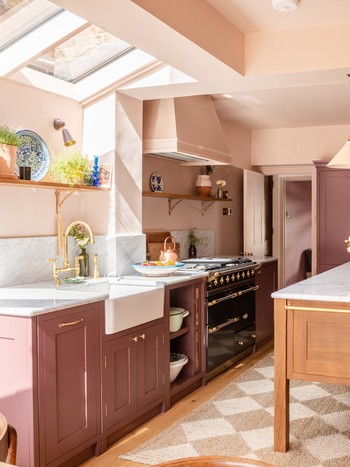Ingenious and Stylish Designs in Modern Legs For Kitchen Island Solutions
Ingenious and Stylish Designs in Modern Legs For Kitchen Island Solutions
Blog Article
Necessary Variables to Consider When Choosing Legs For Kitchen Area Island
Selecting the proper legs for a kitchen area island involves a cautious analysis of numerous aspects that can significantly affect both capability and aesthetic allure. As we check out these aspects, it comes to be clear that each decision can have far-reaching implications for the overall kitchen area experience.
Material Options
When selecting legs for a kitchen area island, recognizing the different product options is essential for attaining both aesthetic appeal and structural stability (Legs For Kitchen Island). The option of product significantly influences not just the toughness of the island but additionally its general design and capability
Wood is a prominent option, using warmth and flexibility. Solid woods, such as oak or maple, give stamina and can be discolored or painted to match the kitchen style. Metal legs, commonly made from stainless-steel or wrought iron, contribute a commercial and modern-day feel while ensuring toughness and security. These products are resistant to put on and can sustain significant weight, making them optimal for bigger islands.
One more option is crafted products, like MDF or plywood, which can be more cost-effective while still using a variety of coatings. They might not supply the very same level of security as strong timber or steel. Legs For Kitchen Island. Materials such as acrylic or glass can develop a contemporary look, though they might require additional support to ensure security.
Eventually, the option of material for kitchen area island legs should align with the desired capability and the overall style of the kitchen.
Design and Style

When considering style, the shape and surface of the legs are critical. Conical legs can provide a sense of agility and sophistication, while thicker, extra durable legs can communicate stamina and security. Furthermore, the coating-- be it painted, stained, or all-natural-- ought to complement the kitchen cabinetry and kitchen counter materials to create a unified look.
Furthermore, the design of the legs can likewise show individual taste. Personalized or decorative legs, such as those including complex makings or distinct geometric shapes, can work as centerpieces, adding character and character to the kitchen area. Eventually, the best option will not only boost functionality but additionally raise the aesthetic allure, making the kitchen island a standout function of the home.
Height Considerations
Picking the appropriate height for kitchen area island legs is crucial, as it directly influences both performance and comfort. The common height for a kitchen island commonly varies from 36 to 42 inches, aligning with common kitchen counter heights. A 36-inch height is optimal for food prep work and food preparation, enabling comfortable usage of cooking area home appliances and devices. On the other hand, an elevation of 42 inches is commonly preferred for islands planned for bar seating, fitting Your Domain Name taller feceses and providing a casual eating experience.

It is likewise vital to account for users' preferences and heights. Customizing the height can make certain a comfy experience for all relative, making the kitchen island a much more delightful and functional space.
Weight Assistance
Making sure ample weight assistance for kitchen island legs is important for both safety and security and capability. The kitchen island frequently serves multiple objectives, including food prep work, dining, and extra storage Full Article space, demanding a robust support structure. When picking legs, it is critical to take into consideration the total weight ability called for based upon the island's intended use and the products that will certainly be put on it.
The option of material for the legs plays a substantial function in their weight-bearing abilities. Strong wood, steel, and sturdy compounds usually give remarkable stamina compared to lighter materials. In addition, the layout of the legs-- whether they are right, tapered, or have a pedestal kind-- can influence their ability to disperse weight successfully across the structure.
Always seek advice from the manufacturer's specs pertaining to load limits to make sure that the legs can sustain the designated weight without compromising security. In recap, selecting kitchen area island legs with ample weight assistance is important for creating a useful and safe culinary space.
Installation and Maintenance
Correct setup and maintenance of kitchen island legs are crucial for ensuring official site durability and security. This typically entails securing the legs to the island base utilizing suitable bolts, making certain that the legs are degree and straightened.
Once mounted, regular upkeep is required to preserve the stability and look of the legs - Legs For Kitchen Island. For wooden legs, regular cleansing with a damp fabric and application of ideal wood polish can stop dampness damages and keep their coating. Steel legs may need a mild cleansing solution to get rid of grease and crud, followed by a completely dry fabric to avoid rust development
In addition, check the legs consistently for signs of wear or damage, such as fractures or loosened joints. Tightening up screws or screws as required can likewise prolong the life expectancy of the legs. By sticking to these setup and maintenance techniques, homeowners can make certain that their kitchen area island stays durable and visually appealing for years ahead.
Verdict

Visual coherence is extremely important in picking the design and style of legs for a cooking area island, as these components greatly affect the overall setting of the space. Conical legs can supply a sense of agility and beauty, while thicker, more robust legs can share strength and security.Picking the ideal elevation for kitchen island legs is vital, as it directly affects both performance and convenience. In summary, choosing cooking area island legs with ample weight support is vital for producing a safe and functional cooking area.
In final thought, selecting legs for a cooking area island requires careful consideration of different elements, consisting of material choices, style, elevation, weight support, and installation.
Report this page